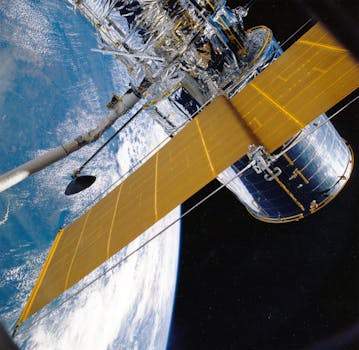Beyond Earth: How Recent Advances Are Shaping Satellite Telecommunications

Beyond Earth: How Recent Advances Are Shaping Satellite Telecommunications
Satellite Telecommunications: Introduction to Recent Advances
Satellite Telecommunications has come a long way since the launch of the first commercial communications satellite, Intelsat 1, in 1965. The recent advances in space technology have transformed the satellite telecommunications industry, enabling faster, more reliable, and efficient communication beyond Earth’s boundaries. The focus keyword, Satellite Telecommunications, is a crucial aspect of modern communication, and its recent advancements are shaping the future of global connectivity.
The use of satellite telecommunications has become increasingly important in recent years, with the rise of remote work, online education, and global communication. The COVID-19 pandemic has further accelerated the demand for reliable and efficient communication systems, and satellite telecommunications have played a vital role in meeting this demand.
The recent advances in satellite telecommunications can be attributed to several factors, including improvements in satellite design, launch technology, and signal processing. The development of new satellite constellations, such as OneWeb and Starlink, has increased the availability of satellite communications, making it more accessible to people around the world.
Advances in Satellite Design and Launch Technology
The design and launch of satellites have undergone significant changes in recent years. The use of advanced materials and technologies has enabled the development of smaller, lighter, and more efficient satellites. The launch of satellites has also become more cost-effective, with the use of reusable rockets and ride-sharing opportunities.
The development of new satellite constellations has also driven innovation in satellite design. The use of phased arrays and digital beamforming has enabled satellites to provide more efficient and flexible communication services. The use of advanced propulsion systems has also improved the maneuverability and lifespan of satellites.
The recent advances in launch technology have also played a crucial role in shaping the satellite telecommunications industry. The use of reusable rockets, such as SpaceX’s Falcon 9, has significantly reduced the cost of launching satellites into orbit. The development of new launch vehicles, such as the Ariane 6 and the Vulcan Centaur, is also expected to further reduce launch costs and increase the efficiency of satellite launches.
Impact of Recent Advances on Satellite Telecommunications
The recent advances in satellite telecommunications have had a significant impact on the industry. The increased availability and efficiency of satellite communications have enabled more people to access fast and reliable internet services, regardless of their location. The use of satellite telecommunications has also become more cost-effective, making it a viable option for businesses and individuals around the world.
The recent advances have also enabled the development of new satellite-based services, such as satellite-based broadband and satellite-based IoT services. The use of satellite telecommunications has also become more important in the context of disaster response and recovery, providing critical communication services in areas affected by natural disasters.
The future of satellite telecommunications looks promising, with continued investment and innovation expected to drive further advancements in the industry. The development of new satellite constellations and the use of advanced technologies, such as quantum computing and artificial intelligence, are expected to further transform the satellite telecommunications industry.




